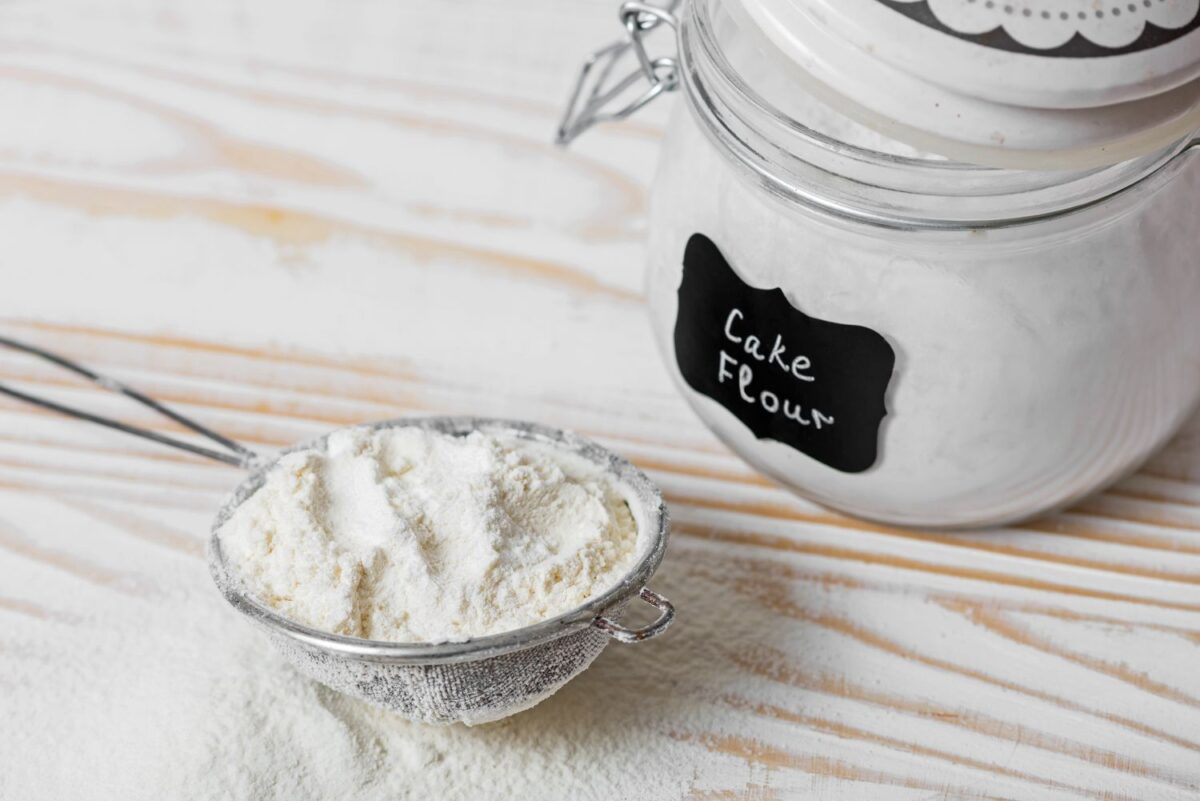Are you a baking enthusiast looking to elevate your cake and pastry creations to the next level? Then you’ve come to the right place! In this comprehensive guide, we will delve into the fascinating world of cake flour, exploring its unique properties, benefits, and how to make it at home.
Get ready to discover the secret ingredient that can transform your baked goods into light, fluffy, and irresistibly delicious treats. Whether you’re a seasoned baker or a novice in the kitchen, this article is packed with essential information that will take your baking skills to new heights. So, let’s uncover the flourishing secret of how to make cake flour and unleash the full potential of your culinary creations.
Key Takeaways:
- Make your own cake flour at home with just a few simple ingredients and steps.
- Cake flour has a lower protein content than all-purpose flour, resulting in a lighter and fluffier texture for baked goods.
- Using cake flour in baking can lead to better results for cakes and pastries due to its lower gluten content.
What is Cake Flour?
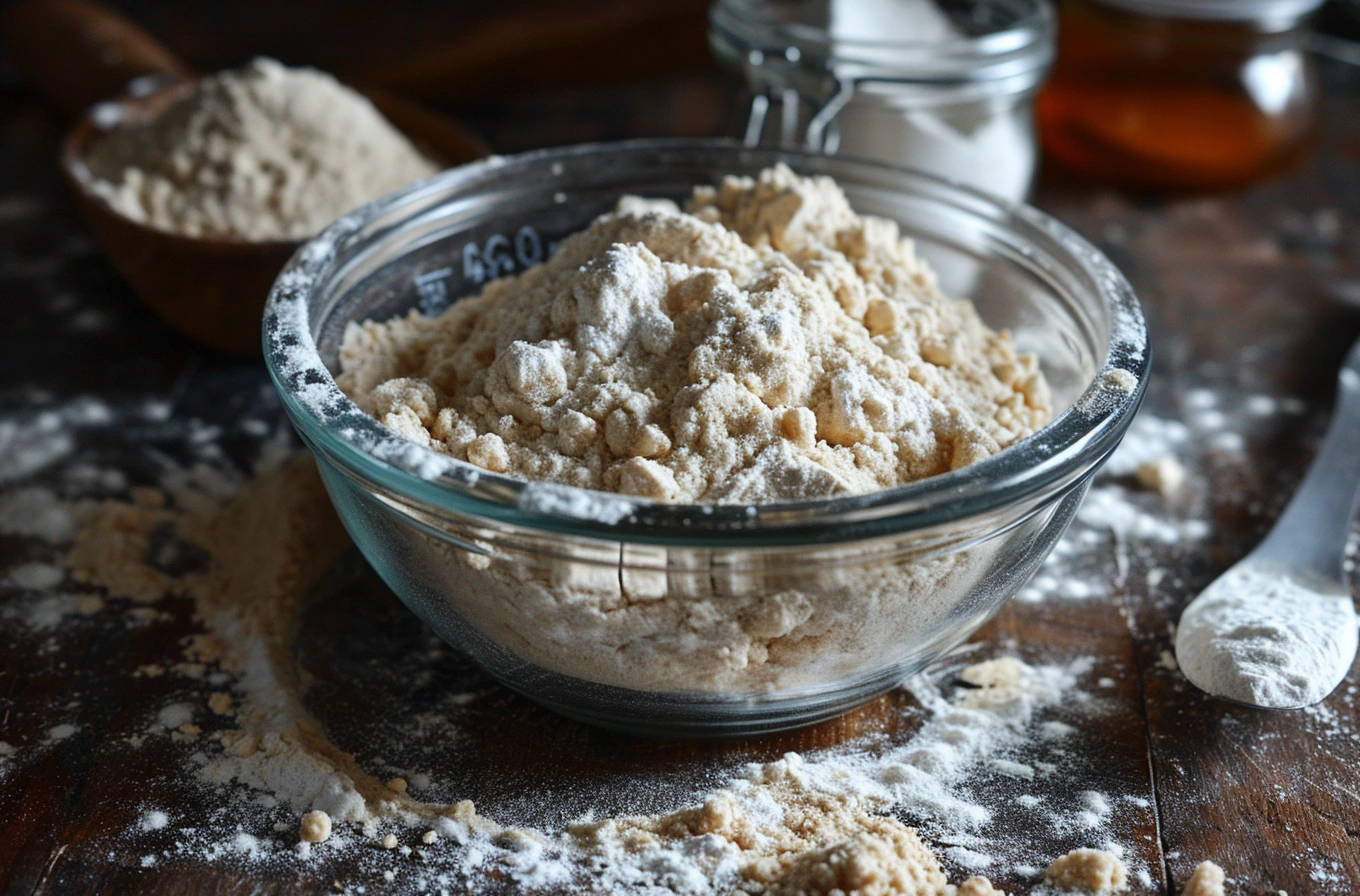
Cake flour is a type of flour that is finely milled and typically used in baking recipes to achieve a soft and tender texture in cakes and pastries.
What sets cake flour apart from other types of flour, such as all-purpose flour, is its finer texture and lower protein content. The finely milled nature of cake flour results in a lighter, more delicate crumb in baked goods, making it an essential ingredient for achieving the desired texture in delicate cakes and pastries.
One popular brand of cake flour is Swans Cake Flour, known for its consistency and reliability in baking. For those who prefer homemade options, creating homemade cake flour is also an option by combining all-purpose flour and cornstarch to achieve a similar consistency and performance.
What Makes Cake Flour Different From All-Purpose Flour?
The key difference between cake flour and all-purpose flour lies in their protein content, with cake flour having a lower protein content, resulting in a finer and softer texture in baked goods.
This lower protein content allows for less gluten formation when cake flour is used, making it ideal for delicate cakes and pastries. In contrast, all-purpose flour has a higher protein content, leading to more gluten development when used in baking.
To mimic the effect of cake flour, a common baking hack is to mix all-purpose flour with cornstarch to reduce the protein content and achieve a lighter texture in baked recipes.
What is the Protein Content of Cake Flour?
Cake flour typically contains around 7-9% protein, which is significantly lower than that of all-purpose flour, contributing to its characteristic soft and delicate texture in baked goods.
This lower protein content limits the formation of gluten, resulting in a finer crumb structure and tender texture in cakes, pastries, and delicate baked treats. It also lends a velvety smoothness to batters, making them ideal for creating light and airy confections.
When used in homemade substitutes for cake flour, such as a blend of all-purpose flour and cornstarch, the reduced protein content mimics the desired characteristics of commercial cake flour, allowing for similar baking results.
What is the Protein Content of All-Purpose Flour?
All-purpose flour typically contains around 10-12% protein, which is higher than that of cake flour, resulting in a more substantial texture in baked goods and making it suitable for a wide range of recipes.
This higher protein content creates a strong gluten network when combined with water, giving structure and elasticity to bread and pizza dough. The versatility of all-purpose flour extends to its use in creating homemade substitutes for other flours. Its neutral flavor allows it to blend seamlessly into various recipes, from tender pancakes and biscuits to hearty pastries and cookies. With its ability to absorb liquid and fat, it contributes to the richness and moisture of baked goods, ensuring satisfying results across different baking applications.
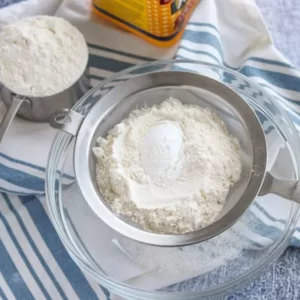
Home Made Cake Flour
Ingredients
- 2 Tablespoons cornstarch
- 1 Cup all-purpose flour
Instructions
- Measure 1 level cup of all-purpose flour,
- remove 2 tablespoons of the flour and then place the flour into a bowl.
- Add 2 tablespoons of cornstarch to the all-purpose flour.
- Whisk together to combine and use as a substitute for 1 cup cake flour.
Notes
How to Make Cake Flour?
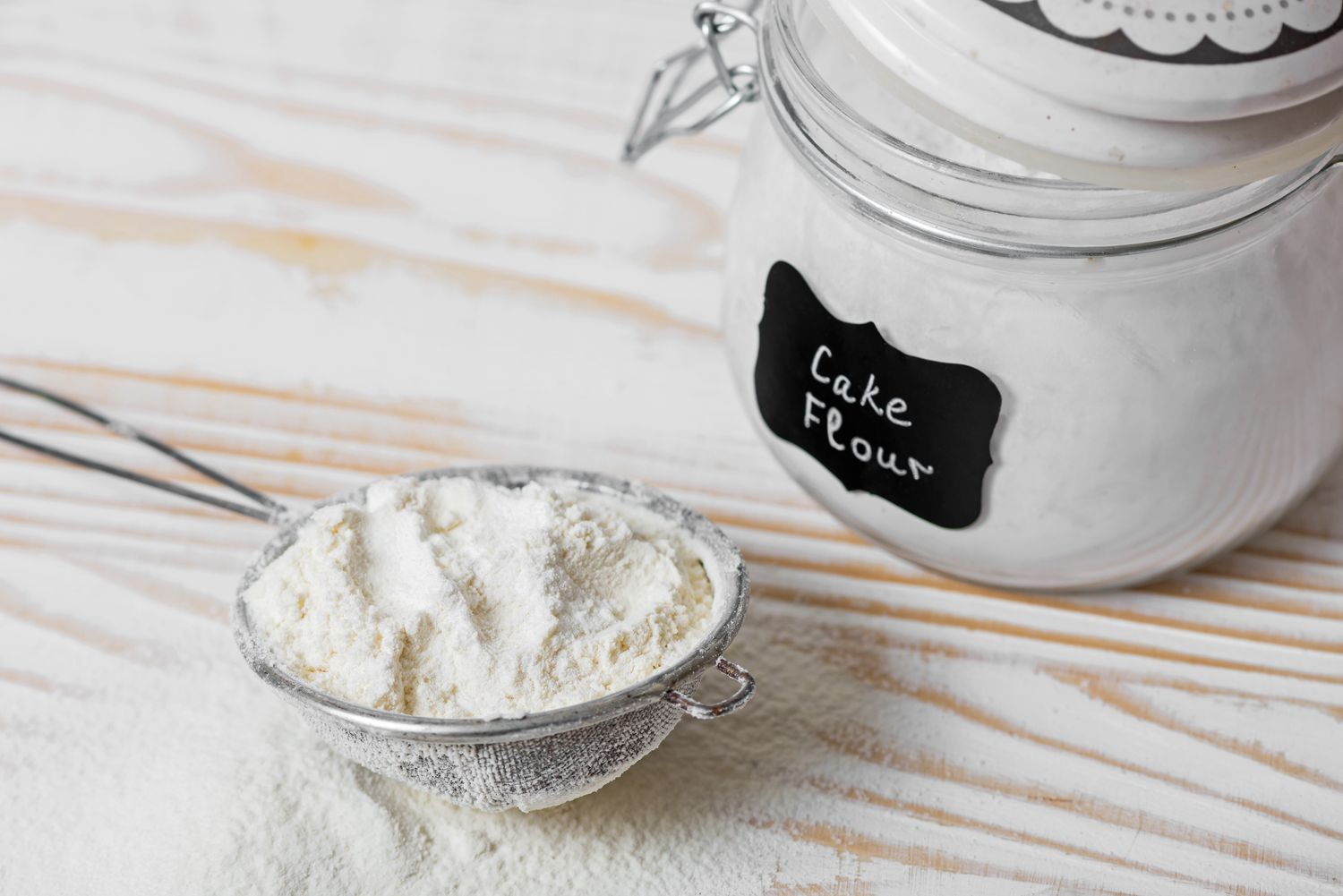
Creating homemade cake flour is a simple process that involves combining all-purpose flour with a small amount of cornstarch and sifting the mixture to achieve a finer texture.
To start, gather 1 cup of all-purpose flour and 2 tablespoons of cornstarch. Using a whisk, thoroughly combine the two ingredients in a bowl until they are evenly distributed.
Next, sift the mixture at least 2-3 times to ensure the cornstarch is fully integrated into the flour, resulting in a light and airy texture perfect for baking cakes. Once the flour is thoroughly sifted, store it in an airtight container in your pantry for up to six months. Alternatively, you can store it in the freezer to prolong its shelf life.”
What Ingredients Do You Need?
To make homemade cake flour, you will need all-purpose flour, cornstarch, and a sifter for blending and sifting the ingredients to create the desired texture.
First, you should measure out 1 cup of all-purpose flour and remove 2 tablespoons of the flour. Then, add 2 tablespoons of cornstarch to the remaining flour and sift the mixture several times to distribute the cornstarch evenly. The resulting mixture will be light and airy, perfect for achieving a delicate crumb in your cakes. This DIY approach allows you to customize the texture of the flour based on your baking needs, ensuring that your cakes turn out just the way you like them.
What are the Steps to Make Cake Flour?
The process of making cake flour involves measuring the ingredients, sifting them together thoroughly, and storing the resulting mixture in an airtight container for future use in baking.
To start, measure the all-purpose flour and cornstarch according to the required proportions. For every 1 cup of all-purpose flour, remove 2 tablespoons of the flour and replace it with 2 tablespoons of cornstarch. Combine the two ingredients and use a sifter to thoroughly sift the mixture at least 5-6 times, ensuring that the cornstarch is evenly distributed through the flour. Once the cake flour is ready, transfer it to an airtight container, label it, and store it in a cool, dry place away from direct sunlight to preserve its freshness for future use.
What are the Benefits of Using Cake Flour?
Using cake flour offers several benefits, such as yielding a lighter and fluffier texture in baked goods, particularly ideal for soft cupcakes and delicate pastries.
One of the main advantages of using cake flour is its low protein content, which results in a finer texture and tender crumb in baked treats. This type of flour is finely milled, creating a silky and smooth texture that contributes to the delicate quality of cakes and pastries.
Its ability to absorb moisture efficiently makes it perfect for recipes that require a delicate and moist interior while still maintaining a structured crumb. The low protein content prevents the formation of excessive gluten, ensuring a soft and airy consistency in the final product.
Lighter and Fluffier Texture
One of the key benefits of cake flour is its ability to impart a light and airy texture to baked goods, making it an excellent choice for creating soft and fluffy cupcakes and similar recipes.
In terms of baking, achieving the perfect texture is crucial, and using cake flour can make all the difference. The fine texture of cake flour contributes to a delicate crumb in baked goods, resulting in a moist and tender finished product. This is particularly desirable when crafting delicate cupcakes and pastries, where a light and airy texture is essential.
Cake flour’s low protein content translates to less gluten development, ensuring a softer and more tender outcome. Its ability to absorb liquid and fat efficiently further enhances the moistness and tenderness of the final baked goods, elevating the overall baking experience.
Better for Baking Cakes and Pastries
Cake flour’s finer texture makes it an optimal choice for baking cakes and pastries, contributing to a tender crumb and delicate structure in renowned recipes such as those from Swans Cake Flour and Momofuku Milk Bar.
Swans Cake Flour, being renowned for its quality, often relies on the use of cake flour in their recipes to achieve the desired lightness and softness in their cakes. Similarly, Momofuku Milk Bar, famous for its innovative pastry creations, incorporates cake flour in their signature confections to ensure a delightful, melt-in-your-mouth texture.
Less Gluten Content
Cake flour’s lower gluten content contributes to a more delicate and tender texture in baked goods, making it an excellent choice for individuals seeking alternative ingredients with reduced gluten content.
In terms of baking, the reduced gluten in cake flour results in a finer crumb structure and a lighter, softer mouthfeel in cakes, muffins, and other delicate pastries. This makes it particularly desirable for creating fluffy, airy cakes and tender cookies. Its reduced protein content allows it to blend seamlessly with other ingredients, promoting a smoother, more uniform texture in the final product. Cake flour’s versatility as a gluten-reduced alternative opens up the possibility for those with dietary restrictions to enjoy a wide range of delectable treats without sacrificing taste or quality.
Can You Substitute Cake Flour with All-Purpose Flour?
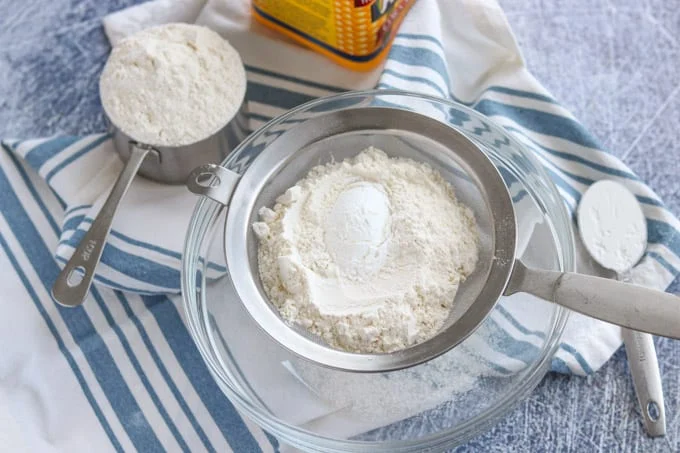
While it is possible to substitute cake flour with all-purpose flour in certain recipes, there are various DIY methods to create homemade cake flour substitutes that can closely mimic its desirable texture.
One popular DIY method involves mixing all-purpose flour with cornstarch. To make one cup of cake flour substitute, you can measure out one cup of all-purpose flour, remove two tablespoons of the flour, and then add two tablespoons of cornstarch. Sift or whisk the two ingredients together to ensure thorough mixing.
Another option is to use a lower-protein flour, such as pastry flour, which more closely resembles the texture of cake flour. If pastry flour is not readily available, you can blend all-purpose flour with a small amount of cornstarch, following the same ratio and mixing process as the previous method.
What Are the Differences Between Cake Flour and All-Purpose Flour?
The primary differences between cake flour and all-purpose flour lie in their protein content, gluten levels, and the resulting texture in baked goods, requiring adjustments in measurements and baking techniques when using substitutes.
Cake flour has a lower protein content (about 7-9%) compared to all-purpose flour, resulting in a finer, more delicate texture in cakes and pastries. On the other hand, all-purpose flour has a higher protein content (around 10-12%), which produces a stronger gluten structure, suitable for a wider range of baked goods. When substituting cake flour with all-purpose flour, it’s essential to anticipate a slight difference in the final texture, and adjustments may be needed in the quantity of flour used or in the overall recipe formulation to achieve the desired results.
How to Store Cake Flour?
Cake flour should be stored in an airtight container in a cool, dry pantry, and it is essential to use a spoon to measure it accurately, ensuring a level and consistent yield, especially when preparing big batches.
Proper storage of cake flour is crucial in maintaining its quality and freshness. When choosing an airtight container, opt for one that seals tightly to prevent moisture from seeping in. Avoid storing it in areas with fluctuating temperatures, such as near the oven or stovetop, which could lead to condensation. Using a spoon for measurement instead of packing the flour into the measuring cup helps to achieve a more precise and consistent result, ensuring the success of your baking endeavors. It’s recommended to label the container with the date of purchase to keep track of freshness, as cake flour can lose its efficacy over time.
How Long Does Cake Flour Last?
When stored in an airtight container in a pantry, cake flour can last for several months, but for extended storage, it is advisable to utilize the freezer, following proper instructions for maintaining its quality and texture.
Proper storage is essential to maintain the freshness of cake flour, especially when aiming for a longer shelf life. When kept in an airtight container, ensure that the pantry is cool, dry, and away from direct sunlight or heat sources. This helps prevent exposure to moisture and odors, which can compromise the flour’s quality. For prolonged storage, transferring the cake flour to the freezer can significantly extend its lifespan. When freezing, use a durable, freezer-safe container or airtight bag, and label it with the date of storage for reference.
Before freezing, it’s crucial to measure the flour accurately to avoid excess air in the packaging. Utilizing a level measure and gently tapping the container can help achieve an even surface, reducing the chances of freezer burn. Create a suitable space in the freezer away from strong-smelling foods to prevent flavor absorption. By following these guidelines, you can preserve the cake flour’s quality for an extended duration, ensuring that it remains suitable for a variety of baking needs.
Can I Use Cake Flour Substitute for Bread Flour in Baking Cakes?
Yes, you can use bread flour for cakes recipe. However, keep in mind that bread flour has higher protein content than cake flour, so your cake may turn out denser. If you want to substitute, do a 1:1 swap, but expect a slightly different texture in your cake.
What Recipes Can You Use Cake Flour In?
Cake flour is a versatile ingredient that can be used in a wide range of recipes, including classic favorites such as vanilla cupcakes, chocolate cakes, strawberry shortcakes, cannoli shells, Neapolitan cakes, pound cakes, and flaky biscuits.
Its finely milled texture and lower protein content make it ideal for creating tender and delicate baked goods. For example, the use of cake flour in a neapolitan cake results in a light and airy texture, enhancing the layers of vanilla, chocolate, and strawberry flavors.
In strawberry shortcakes, the use of cake flour brings a fine crumb and soft texture to the biscuits, perfectly complementing the juicy strawberries and whipped cream.
Frequently Asked Questions
What is cake flour and why is it important for baking?
Cake flour is a type of flour that has a lower protein content than all-purpose flour, making it ideal for creating light and fluffy cakes. It is important for baking because it provides the right texture and structure for cakes, resulting in a more delicious and professional-looking final product.
Can I substitute all-purpose flour for cake flour?
Yes, you can substitute all-purpose flour for cake flour by using a ratio of 1 cup of cake flour to 1 cup minus 2 tablespoons of all-purpose flour. This will provide similar results, but the texture and rise of the cake may be slightly different.
How do I make cake flour at home?
To make cake flour at home, simply measure out 1 cup of all-purpose flour and remove 2 tablespoons. Replace the 2 tablespoons of flour with 2 tablespoons of cornstarch and sift the mixture together to evenly distribute the cornstarch. This creates the lower protein content and lighter texture of cake flour.
What is the Flourishing Secret to making the perfect cake flour?
The Flourishing Secret is using a combination of all-purpose flour and cornstarch to create a lower protein content and lighter texture, mimicking the qualities of store-bought cake flour. This easy substitution can elevate your baking and make your cakes turn out even better.
Can I use cake flour for other baking recipes?
Cake flour is best used for delicate and light baked goods, such as cakes, cupcakes, and muffins. It is not recommended for bread or other heavier baked goods that require more structure and rise. Stick to using cake flour for recipes that specifically call for it.
Do I need to sift the flour mixture after adding cornstarch?
Yes, it is important to sift the flour mixture after adding cornstarch to evenly distribute the cornstarch and prevent any clumps from forming. Sifting also helps to aerate the flour, which can result in a lighter and fluffier final product.

